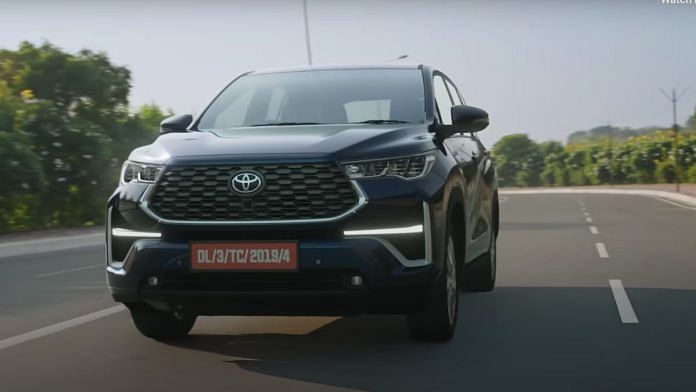If you have been following news or live in the National Capital Region, you’ll know that the air has turned murky brown. Sadly, it is a staple in the NCR life at the onset of every winter. But now, the air quality index is rising to dangerous levels in several other Indian cities as well, particularly the Mumbai Metropolitan Region.
There are many reasons for the decline in air quality, starting with the drop in temperature to farm fires and certainly rampant construction activities. Vehicular pollution is a major contributor as well—and that too throughout the year. Worse, the number of vehicles on India’s roads is only increasing and will continue to increase sharply over the next few years.
It is almost certain that under the Graded Response Action Plan (GRAP), more and more vehicles will be banned from running on NCR roads. The much-despised ‘odd-even’ plan might be implemented too. But these are small, short-term fixes, more for psychological impact than for actual change. The odd-even plan has so many loopholes it’s like Swiss cheese.
EVs aren’t innocent
So, can the government do anything to fix this once and for all? It is very easy to suggest moving toward electric vehicles (EVs), thanks to the fact that they have zero tailpipe emissions. I have been driving an EV, the Hyundai IONIQ 5, for several months now. Yes, it does make me feel a bit smug about not adding to pollution in the city. However, it is important to understand that EVs, too, take a toll on the environment—much of the power produced in India is generated from coal, a process that belches tonnes of carbon dioxide. The production of Lithium-ion batteries for EVs is also extremely taxing on the environment. But because electric vehicles ‘shift’ the pollution away from urban centres and are increasingly ramping up consumption of renewable energy, they seem like an easy fix.
Moreover, battery electric vehicles (BEVs) are expensive. Even with a reduced rate of GST of five per cent, compared to the 43 per cent (plus cess) for large passenger vehicles, BEVs are still expensive for the average car buyer in India. The top-selling BEV in the country, the Tata Nexon EV, which recently underwent a major makeover, has an on-road cost (in Delhi) of Rs 21 lakh for the top variant. It is Rs 4 lakh more than the price of the equivalent petrol model, even with lower GST and no road tax or registration costs in Delhi. The Hyundai IONIQ 5, a much bigger D-segment SUV, costs almost Rs 10 lakh more on-road in Delhi than a similarly featured and sized Hyundai Tucson, with both cars coming as parts and components from South Korea.
Also read: Toyota’s solid-state batteries can solve EV problems big time. But I have my doubts
Affordability gap in all segments
Even in the two-wheeler segment, where buyers can avail of subsidies, the price differential between a normal petrol scooter and a battery-operated one is nearly Rs 50,000. While manufacturers like Ather Energy, whose Hosur factory I visited recently, are making more affordable electric two-wheelers, there is a massive affordability gap, as the additional cost of buying the BEV will not be fully offset by the massively reduced running costs.
The reason that so many commercial vehicles are going electric is economic, not ecological—the average commercial vehicle operates long distances every day and innovation by companies like Exponent Energy is driving that change. But the same does not apply to private vehicles because the affordability gap has not been suitably bridged.
While those who can afford BEVs may buy them for altruistic reasons—they understand that every little thing counts—spending extra in this regard seems a bit excessive. Cars are generally becoming more expensive, and issues like range and charging infrastructure persist. That is why BEV sales remain at around just two per cent of overall passenger car sales in India.
The best way to enhance affordability is by offering subsidies. But the central government’s Faster Adoption and Manufacturing of Hybrid & Electric Vehicles (FAME) Scheme has been poorly implemented. It even led to a massive controversy, with the government accusing manufacturers of ‘gaming’ the system and manufacturers, in turn, accusing the state of shoddy rule-making and holding back genuine funds. A better-planned subsidy scheme implemented by banks that give out vehicle loans might be a fix. But that will take time.
Also read: India must not let China become for EVs what Saudi is for oil
Time to look at hybrids now
If cleaning the air by reducing overall fuel consumption is the goal while keeping vehicles affordable, the government really ought to look at hybrid vehicles a bit more seriously. The success of the new Innova Hycross hybrid is an indication that consumers are loving the reduced fuel bills. However, it appears that senior leadership in the government looks at hybrid vehicles as ‘yesterday’s technology’. It should see how in the United States, EV sales are declining while that of hybrids is increasing. That’s because hybrid cars solve several problems, particularly affordability and range concerns.
A graded taxation system that taxes vehicles on the amount of tailpipe emissions should be designed and implemented. This will not only incentivise EVs with no emissions but also hybrids, which have far-reduced emissions compared to petrol and diesel cars. We cannot have the same solutions as European countries because we are not Europe—and our vehicular policies are written as if we were. A smarter vehicle emissions policy is needed in India.
@kushanmitra is an automotive journalist based in New Delhi. Views are personal.
(Edited by Humra Laeeq)



